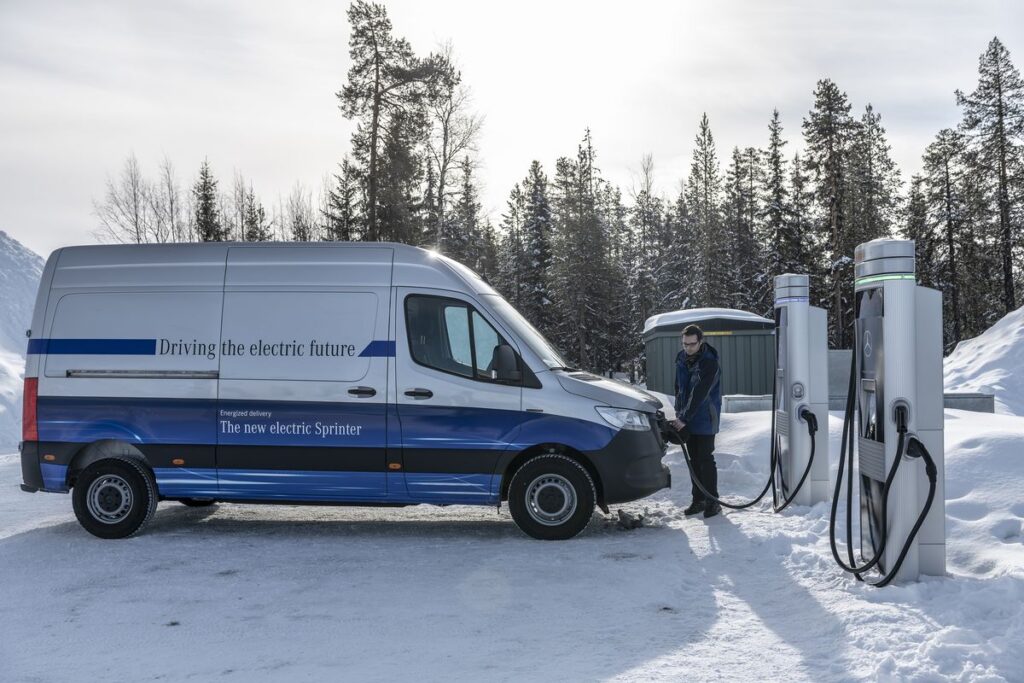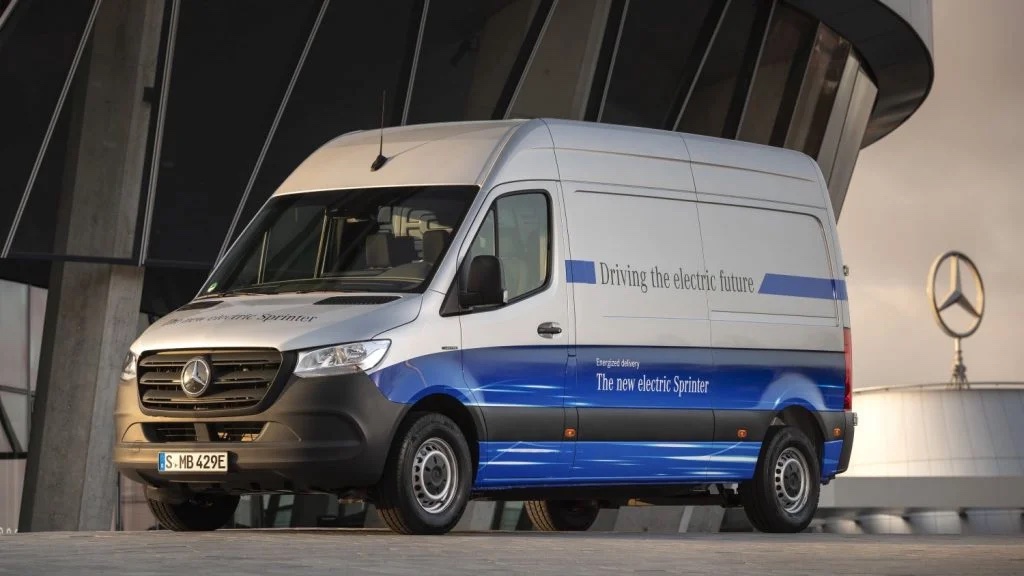
The Good News: Electric Range and Charging
The official reveal of the Mercedes-Benz eSprinter is finally here! The electric Sprinter van, formally announced today in North America, has a pretty impressive estimated 248 miles of range, compared to the 126-mile range of its Ford E-Transit competitor. The fine print on the announcement does say that the vehicle to get this range did have a 55 mph speed limiter.
This next-generation eSprinter also has unexpectedly good battery capacity: it has an underbody 113-kWh lithium iron phosphate (LFP) battery pack, which Mercedes claims can be charged from 10 to 80 percent capacity in about 40 minutes (at the highest 115 kW charging rate).
Mercedes-Benz has done plenty of testing in real-world conditions, in fact 1500 electric prototype eSprinter and eVito vans were deployed by Hermes Logistics in Hamburg and Stuttgart starting in 2018 to test how the new Sprinter would operate. No word yet from Mercedes-Benz Vans on up-front purchase cost of the eSprinter: the electric van market is being driven along not just by fleet managers’ hopes of lower total cost of ownership, but also by the pledges of a number of European cities to no longer allow diesel trucks into their city centers as of 2025.
How the electric Sprinter does in extreme temperatures is also a concern of course, so from December 2020 until March 2021, Mercedes-Benz had been testing the new van in the frosty Scandinavian winter, as reported by Car and Driver. With air temperatures as low as -30C (22F) at the Arjetlog, Sweden testing grounds, sounds like even the skeptics in the automotive industry could be assured that the testing was thorough. I haven’t seen any figures on winter loss of battery capacity, but I would imagine in intense cold weather the battery could be down to 50-60% of normal battery strength, which would require planning for any inter-city runs in winter.
Electric Sprinter Van Power and Layout
In Europe, the eSprinter is reportedly a front-wheel-drive vehicle. The electric version of the North American eSprinter is a rear-wheel-drive Sprinter 170″WB high-roof van, where the electric rear axle is actually powered with either a 100 kW or 150 kW permanent-magnet synchronous motor, not just from a front-mounted engine and longitudinal driveshaft. Mercedes Benz says the next-gen eSprinter concept is based on the idea of three modules:
- The front module includes all high-voltage components and can be combined unchanged with all vehicle variants, regardless of wheelbase and battery size.
- The second module is the battery, an integrated high-voltage battery located in the underbody to save space. The battery location between the axles, together with the robust battery housing, results in a low center of gravity, which helps with safe and predictable handling.
- The third pillar of the modular design is the rear module with the electrically-driven rear axle and motor. The powerful electric motor can deliver 295 lb-ft of torque, and is lighter and smaller (around 286 pounds), in contrast to the roughly 500-lb regular turbodiesel.

eSprinter Production
This latest Mercedes electric van is rolling off the assembly line at the Mercedes factory in Düsseldorf, but in the second half of 2023 the new eSprinter is also expected to be built in Charleston, South Carolina and another German Mercedes plant in Ludwigsfelde.
“We have decided to expand the next generation of the Mercedes-Benz eSprinter to a total of three locations…We will benefit from our experience which we have already built up very successfully in the production of electric and conventionally driven vans on a line at our plant in Düsseldorf. In the future, we will be able to quickly meet the ever-increasing demand for electrically driven vans and, thanks to our intelligent and flexible production, be able to respond very precisely to the requirements of the different markets and make optimum use of our capacities,” said Dr. Ingo Ettischer, Head of Production at Mercedes-Benz Vans. “For the adjustment of production, we will invest around €50 million in each of the three plants. We will start production of the eSprinter successively from the second half of 2023.”
If you really want to geek out, check out this 16-minute video of the new electric Sprinter van being built in Dusseldorf. While there are plenty of robots welding and painting, there are also still lots of expert Mercedes Benz workers carefully assembling each eSprinter van.
More Details on the New Electric Sprinter
Check out these other articles:
Jalopnik: Mercedes’ 2023 Electric Sprinter Van Hits Nearly 300 Miles Per Charge
RV.com: Electric Mercedes Sprinter Van Travels Nearly 300 Miles on a Single Charge
MBusa.com: The all-new eSprinter: the most efficient Mercedes-Benz eVan of all time




Comments on this entry are closed.